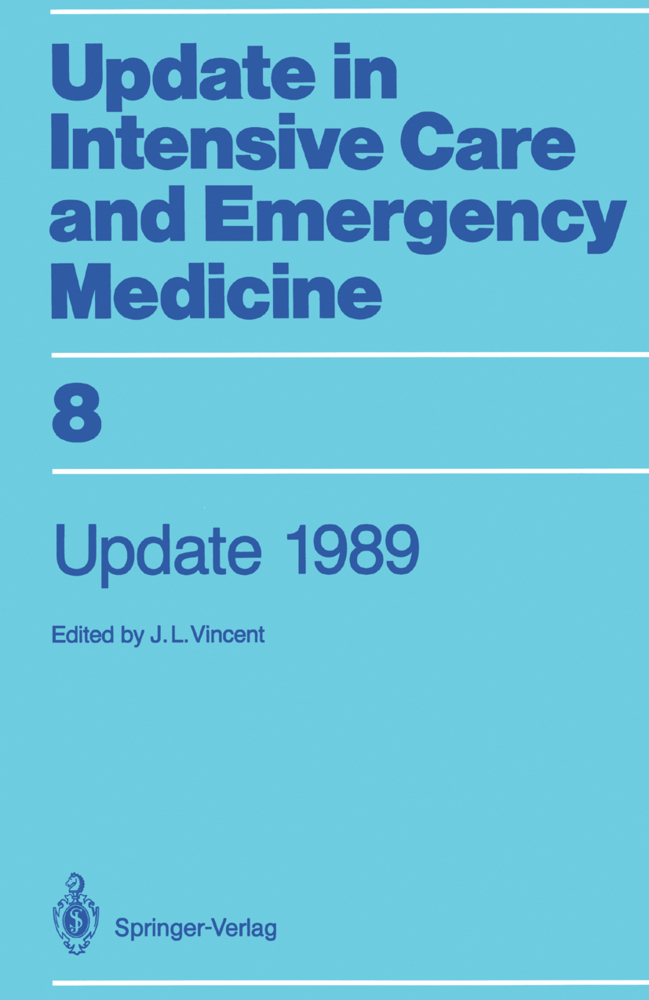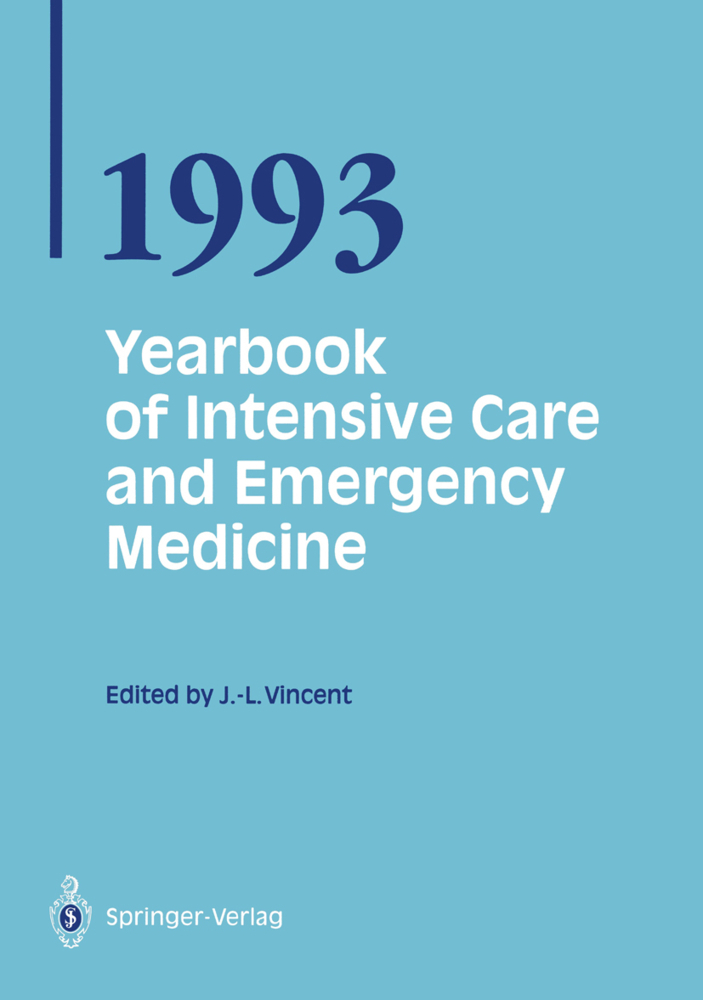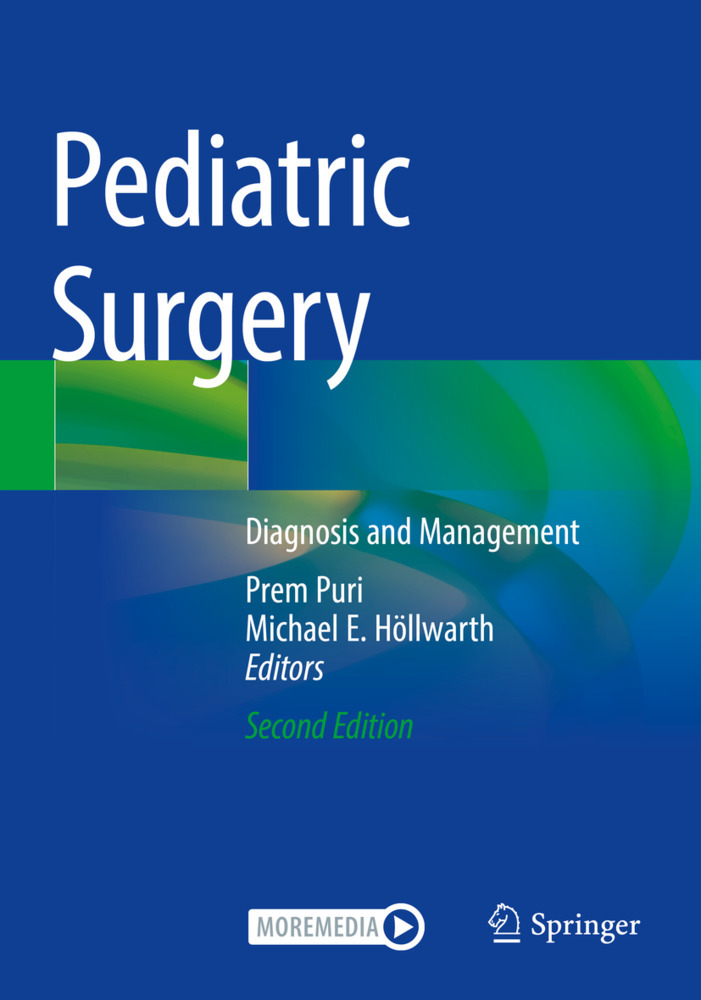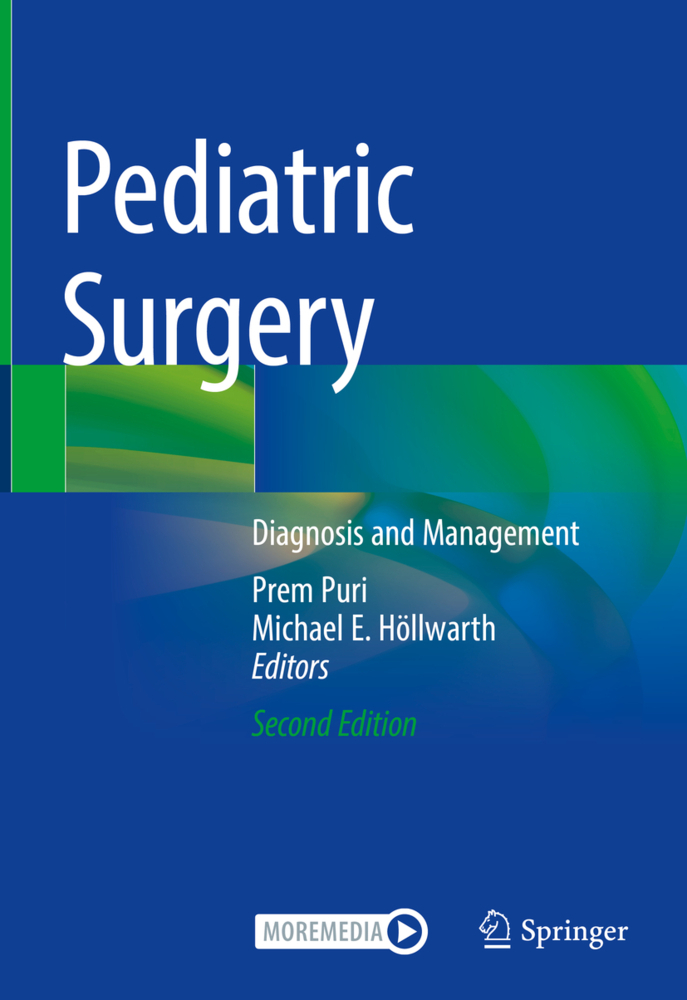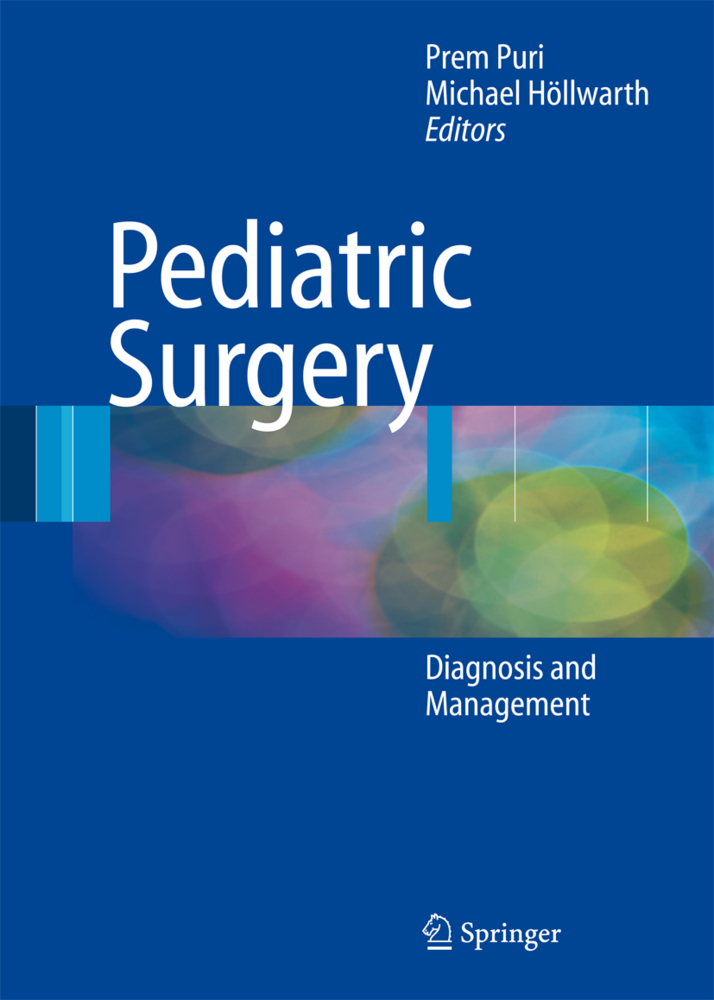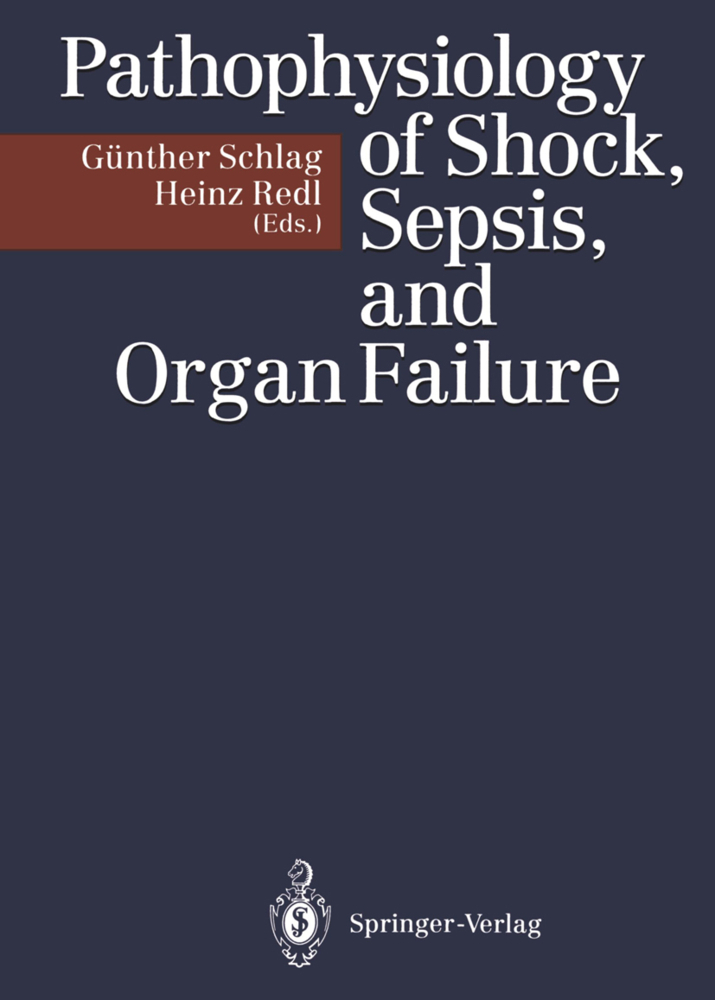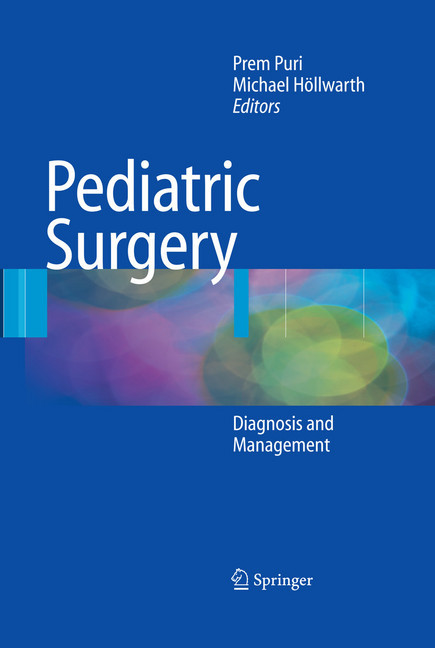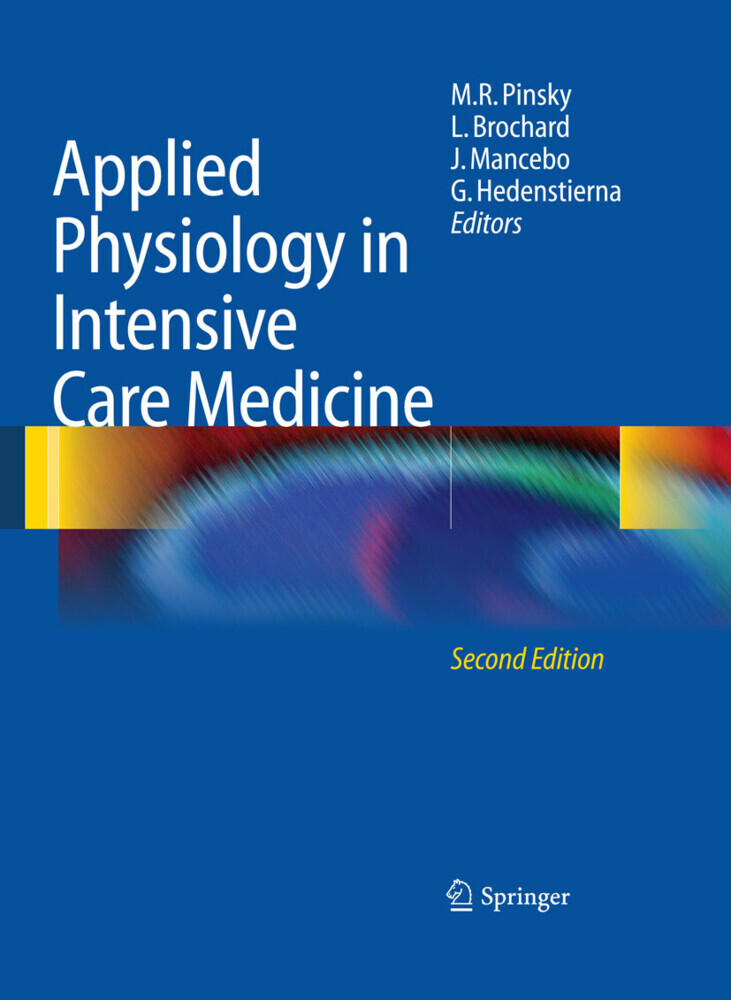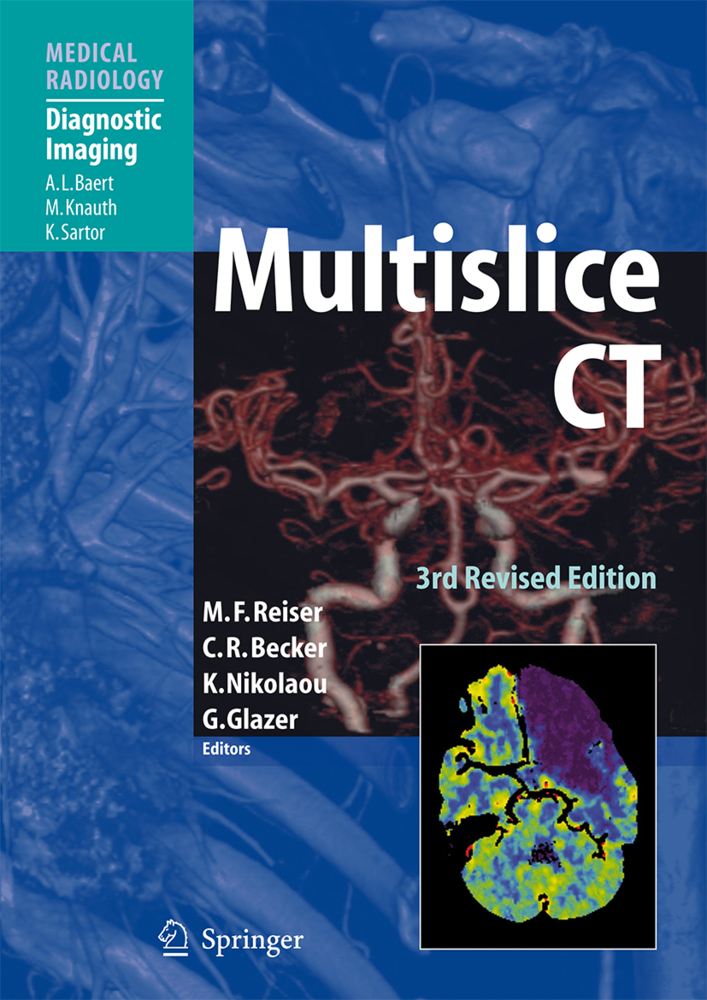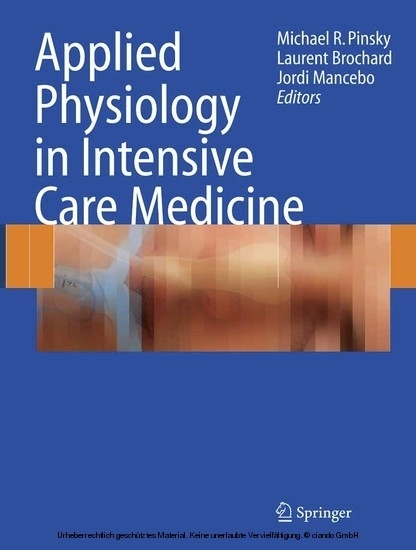Update 1989
Update 1989
This book presents a comprehensive survey in which internationally recognized experts discuss specific topics. The wide spectrum of experimental and clinical investigations include the pathophysiologic, diagnostic and therapeutic aspects. Update 1989 represents the series' continuous effort to combine the most recent developments in one reference source for all those involved in cardiology, internal medicine, pediatrics, anesthesia, intensive care and emergency medicine.
TNF and Septic Shock
Role of Neutrophils and Macrophages in Multiple Organ Failure
Role of Neutrophils in Critically Ill Patients: Myeloperoxidase, a Specific Marker of Their Activation
Acute Lung Injury: Role of Lipid Peroxidation
The Role of the Contact System in the Pathophysiology of ARDS
Acute Respiratory Failure
Acute Respiratory Failure: Current Concepts
Re-Evaluation of Starling Forces Balance and Lymphatic Clearance in the Lung
Bedside Measurement of Extravascular Lung Water
Serum Markers in Acute Lung Injury
PGE1 for Prevention and Treatment of ARDS After Surgery
Sudden Asphyxia in Asthma
Salt and Water Disorders in Mechanically-Ventilated and Critically Ill Neonates
The Role of Infection in the Premature and Adult with Lung Injury
Atypical Pneumonia in the ICU
Septic Problems
Pathogenesis of Gram-negative Bacterial Infections
Plasma Fibronectin in Septic Critically Ill Patients
Nosocomial Sinusitis in Intensive Care Patients
Acquired Infections in the ICU: The Current Status of Selective Decontamination
Device-Related Infections
Judicious Use of Antibiotics in Critically Ill Patients
O2-Metabolism
Continuous Measurement of Pulmonary Gas Exchange During Mechanical Ventilation
Monitoring of Energy Expenditure
Cellular Response to Hypoxia
Skeletal Muscle PO2 Assessment in Shock
Optimal Levels Oxygen Transport in Critically Ill Patients
Effects of Transfusion on Systemic Oxygen Uptake
Hematological and Rheological Aspects of Oxygen Transport: The Optimal Hematocrit
Metabolic Problems
Nutritional-Metabolic Interactions During Total Parenteral Nutrition in Sepsis
Energy Metabolism Following Head Injury
Protein Metabolism in the Catabolic Patient
Nutritional Support in Patients with Acute Respiratory Failure Undergoing Artificial Ventilation
Hyperosmolal States
Treatment of Symptomatic Hyponatremia and Permanent Brain Lesions
Acute Circulatory Failure
Objectives for the Treatment of the Microcirculation in Ischemia, Shock, and Reperfusion
Alterations in Vascular Reactivity in Sepsis and Endotoxemia
Anaphylactic Shock: Pathophysiology and Implications for Treatment
Pathogenesis of Cardiovascular Dysfunction in Septic Shock
Treatment of Metabolic Acidosis in Low Flow States: Should We Administer Bicarbonate?
Acute Renal Failure
Renal Failure in the Neonate
Hemofiltration
Renal Function in Septic Shock
Gastro-intestinal and Liver Failure
Current Status of Stress Ulceration Prophylaxis
Hepatic Dysfunction in Shock
Acute Liver Failure: An Overview
Fulminant and Subacute Hepatic Failure: The Place of Liver Transplantation
Fluid and Blood Administration
Rationale and Guidelines of Fluid Resuscitation in Extensive Burns
Autotransfusion: A Safe Alternative
Blood Component Therapy in the Critically Ill
Component Dilution During Fluid Resuscitation Without Calculator, Computer, or Nomogram
Emergency Medicine
Transport of Severely Injured Patients
Prehospital Care: A Search for Indication?
Anesthesia for Trauma
Near-drowning
Acute Intoxication by Ethylene-Glycol and Methanol
Neurologic Crisis
Analysis of the ICP Waveform: Current Status
Non-traumatic Cerebral Insult in Children: Intensive Care Aspects
Significance and Management of Intracranial Hypertension After Head Injury
Cardiovascular Crisis
The Role of Coronary Vasomotor Tone in Chronic and Acute Ischemic Syndromes
Prevention of Sudden Death FollowingMyocardial Infarction
Assessment of Right Ventricular Function in the Critically Ill: Fact, Fancy, and Perspectives
The Place of Phosphodiesterase Inhibitors in Acute Circulatory Failure
Hemodynamics During and After Cardiac Arrest
Cardiovascular Monitoring
Assessment of Cardiovascular Function by Pressure Waveform Analysis
Invasive and Noninvasive Monitoring of Physiologic Patterns of High Risk Surgical Patients
Cardiac Surgery
Cardiac Risk in Surgical Patients: Assessment and Reduction
Management of Cardiovascular Dysfunction After Cardiac Surgery
Sedation in Intensive Care
Sedation During Intensive Care: Overview of the Problem
Pharmacokinetics of Benzodiazepines Used for ICU Sedation
Pediatric Intensive Care
Physiologic Regulation of the Perinatal Pulmonary Circulation
Central Airway Obstruction in Children
Clinical Use of High-frequency Ventilation in Infants
Perinatal Manipulation of Renal Function.
Mediators in Multiple Organ Failure
Sepsis and Multiple Organ Failure: Pathogenesis and TreatmentTNF and Septic Shock
Role of Neutrophils and Macrophages in Multiple Organ Failure
Role of Neutrophils in Critically Ill Patients: Myeloperoxidase, a Specific Marker of Their Activation
Acute Lung Injury: Role of Lipid Peroxidation
The Role of the Contact System in the Pathophysiology of ARDS
Acute Respiratory Failure
Acute Respiratory Failure: Current Concepts
Re-Evaluation of Starling Forces Balance and Lymphatic Clearance in the Lung
Bedside Measurement of Extravascular Lung Water
Serum Markers in Acute Lung Injury
PGE1 for Prevention and Treatment of ARDS After Surgery
Sudden Asphyxia in Asthma
Salt and Water Disorders in Mechanically-Ventilated and Critically Ill Neonates
The Role of Infection in the Premature and Adult with Lung Injury
Atypical Pneumonia in the ICU
Septic Problems
Pathogenesis of Gram-negative Bacterial Infections
Plasma Fibronectin in Septic Critically Ill Patients
Nosocomial Sinusitis in Intensive Care Patients
Acquired Infections in the ICU: The Current Status of Selective Decontamination
Device-Related Infections
Judicious Use of Antibiotics in Critically Ill Patients
O2-Metabolism
Continuous Measurement of Pulmonary Gas Exchange During Mechanical Ventilation
Monitoring of Energy Expenditure
Cellular Response to Hypoxia
Skeletal Muscle PO2 Assessment in Shock
Optimal Levels Oxygen Transport in Critically Ill Patients
Effects of Transfusion on Systemic Oxygen Uptake
Hematological and Rheological Aspects of Oxygen Transport: The Optimal Hematocrit
Metabolic Problems
Nutritional-Metabolic Interactions During Total Parenteral Nutrition in Sepsis
Energy Metabolism Following Head Injury
Protein Metabolism in the Catabolic Patient
Nutritional Support in Patients with Acute Respiratory Failure Undergoing Artificial Ventilation
Hyperosmolal States
Treatment of Symptomatic Hyponatremia and Permanent Brain Lesions
Acute Circulatory Failure
Objectives for the Treatment of the Microcirculation in Ischemia, Shock, and Reperfusion
Alterations in Vascular Reactivity in Sepsis and Endotoxemia
Anaphylactic Shock: Pathophysiology and Implications for Treatment
Pathogenesis of Cardiovascular Dysfunction in Septic Shock
Treatment of Metabolic Acidosis in Low Flow States: Should We Administer Bicarbonate?
Acute Renal Failure
Renal Failure in the Neonate
Hemofiltration
Renal Function in Septic Shock
Gastro-intestinal and Liver Failure
Current Status of Stress Ulceration Prophylaxis
Hepatic Dysfunction in Shock
Acute Liver Failure: An Overview
Fulminant and Subacute Hepatic Failure: The Place of Liver Transplantation
Fluid and Blood Administration
Rationale and Guidelines of Fluid Resuscitation in Extensive Burns
Autotransfusion: A Safe Alternative
Blood Component Therapy in the Critically Ill
Component Dilution During Fluid Resuscitation Without Calculator, Computer, or Nomogram
Emergency Medicine
Transport of Severely Injured Patients
Prehospital Care: A Search for Indication?
Anesthesia for Trauma
Near-drowning
Acute Intoxication by Ethylene-Glycol and Methanol
Neurologic Crisis
Analysis of the ICP Waveform: Current Status
Non-traumatic Cerebral Insult in Children: Intensive Care Aspects
Significance and Management of Intracranial Hypertension After Head Injury
Cardiovascular Crisis
The Role of Coronary Vasomotor Tone in Chronic and Acute Ischemic Syndromes
Prevention of Sudden Death FollowingMyocardial Infarction
Assessment of Right Ventricular Function in the Critically Ill: Fact, Fancy, and Perspectives
The Place of Phosphodiesterase Inhibitors in Acute Circulatory Failure
Hemodynamics During and After Cardiac Arrest
Cardiovascular Monitoring
Assessment of Cardiovascular Function by Pressure Waveform Analysis
Invasive and Noninvasive Monitoring of Physiologic Patterns of High Risk Surgical Patients
Cardiac Surgery
Cardiac Risk in Surgical Patients: Assessment and Reduction
Management of Cardiovascular Dysfunction After Cardiac Surgery
Sedation in Intensive Care
Sedation During Intensive Care: Overview of the Problem
Pharmacokinetics of Benzodiazepines Used for ICU Sedation
Pediatric Intensive Care
Physiologic Regulation of the Perinatal Pulmonary Circulation
Central Airway Obstruction in Children
Clinical Use of High-frequency Ventilation in Infants
Perinatal Manipulation of Renal Function.
Vincent, Jean Louis
| ISBN | 978-3-540-50879-3 |
|---|---|
| Artikelnummer | 9783540508793 |
| Medientyp | Buch |
| Copyrightjahr | 1989 |
| Verlag | Springer, Berlin |
| Umfang | XX, 636 Seiten |
| Abbildungen | XX, 636 p. 25 illus. |
| Sprache | Englisch |

